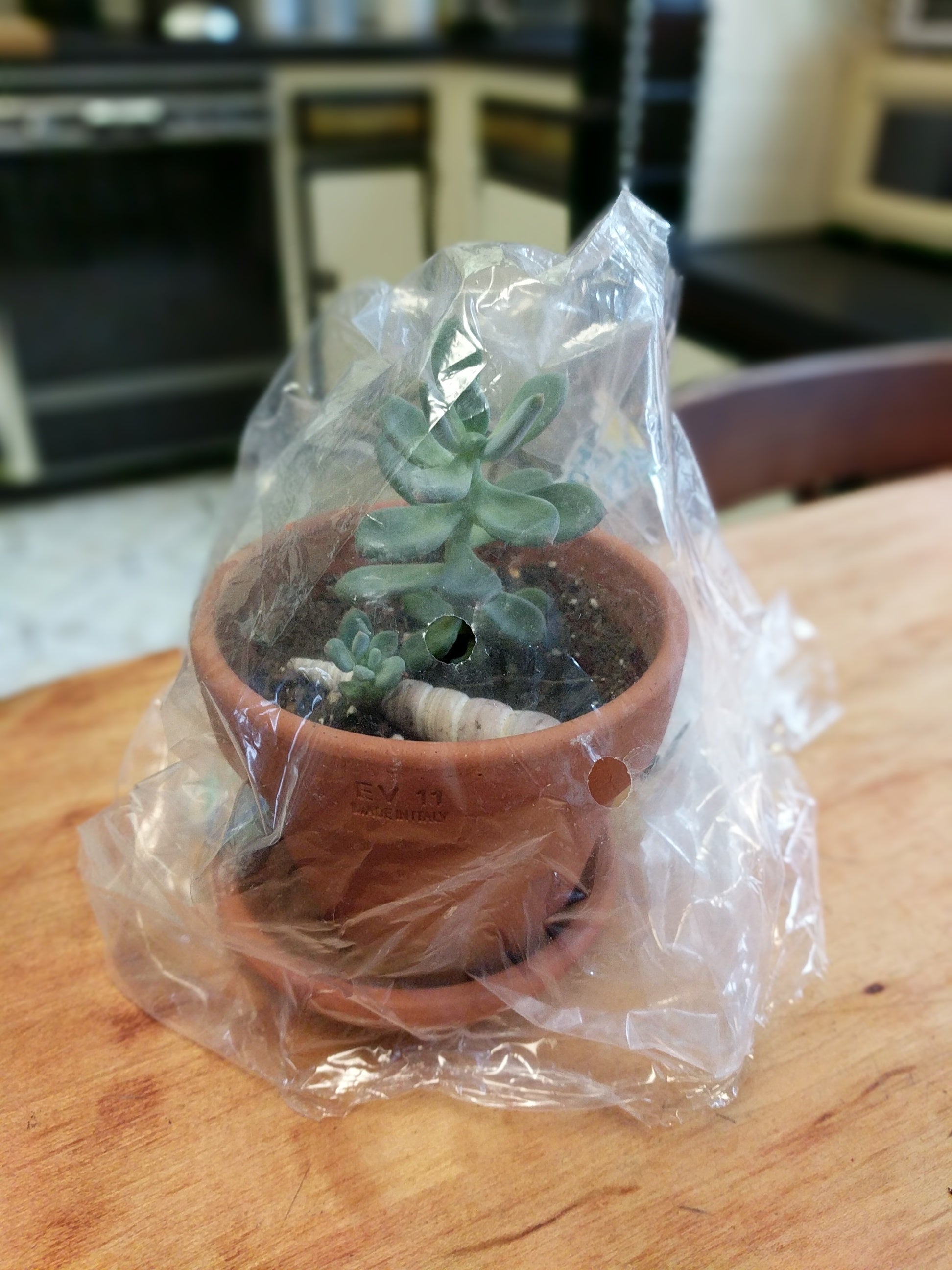What Is A Plastic Bag Greenhouse: Tips For Covering Plants With Plastic Bags


Are you planning an extended trip-- maybe a vacation, cruise, or sabbatical? Perhaps you’ll be away from home for several weeks to even several months. You’ve made arrangements to board the pets, but what about your houseplants?
Or maybe you’re sprouting small seeds that need to remain constantly moist, but you just can’t mist them several times a day. These situations might be assisted by covering plants with plastic bags, but there are some things you need to know first when using plastic as a greenhouse for plants– this article will help with that.
Covering Plants with Plastic Bags
Plants under plastic bags retain moisture and even capture what the plants produce by transpiration. Don’t use plastic bags as a greenhouse for succulents, though, as they can definitely tolerate neglect, but won’t tolerate this kind of moisture.
Perhaps an unexpected freeze is forecast and you hope to save the buds on potted flowering and/or fruit producing shrubs outside. If the bush is small enough to cover, you can fit a clean plastic garbage bag over or around it and possibly save the buds. For larger shrubs, you can even cover with a sheet or a plastic tarp.
You may also use a dark colored bag if that’s all you have. Make sure to remove the bags early the next day, particularly if the sun is shining. Plastic intensifies the suns’ rays and your buds can quickly go from the risk of freezing to burning. In general, when using a plastic bag greenhouse, your container should be in a shady spot.
This is particularly true if you must leave the plants covered for a long period of time. If you use a plastic bag to cover sprouting seeds, let them get a few brief peeks of sun when possible.
Also, in this situation, remove the plastic bag for an hour or so every few days. Check the soil moisture and allow them to get some air circulation to avoid damping off. Any plants covered in plastic benefit from running a fan and fresh air, but not from indoor heating in most cases.
Gardening tips, videos, info and more delivered right to your inbox!
Sign up for the Gardening Know How newsletter today and receive a free copy of our e-book "How to Grow Delicious Tomatoes".
Pricking small pinholes in the plastic can also help with air circulation while still providing the moisture necessary for growing.
Using a Plastic Bag Greenhouse
Getting your plants ready for time in a plastic grow bag greenhouse starts with a little maintenance and watering. Remove dead leaves. Check for pests and treat if necessary. Pests and disease can flourish in this environment if they’re already present.
You want your plants to be moist, but not soggy. Water a couple of days before enclosing them in plastic. Give excess water time to evaporate or run out of the container. If you put a plant with soggy soil into a plastic bag, the water usually remains and the result may be a rotted root system.
Moist soil is the key to successful plastic grow bag greenhouse use. You can likely find other uses for covering plants with a clear plastic bag. Some use chopsticks or similar sticks to keep the plastic from touching the foliage.
Follow the steps above and experiment with using plastic covering to keep your plants in good condition in a number of situations.

Becca Badgett was a regular contributor to Gardening Know How for ten years. Co-author of the book How to Grow an EMERGENCY Garden, Becca specializes in succulent and cactus gardening.
-
 Looking For Plants To Give You The Soft And Fuzzies? Try These 5 Fuzzy Leaf Plant Options
Looking For Plants To Give You The Soft And Fuzzies? Try These 5 Fuzzy Leaf Plant OptionsLovers of texture, drama, silver foliage and tactile plants will adore these special sensory garden additions. These fuzzy leaf plant options will leave you all aglow
By Susan Albert
-
 Get Ready For A Summer Of Hummers! Grow These Full Sun Hummingbird Plants and Flowers
Get Ready For A Summer Of Hummers! Grow These Full Sun Hummingbird Plants and FlowersIf you’re lucky enough to enjoy a sunny backyard, make sure you are maxing out on your pollinator opportunities and grow these full sun hummingbird plants and flowers
By Tonya Barnett